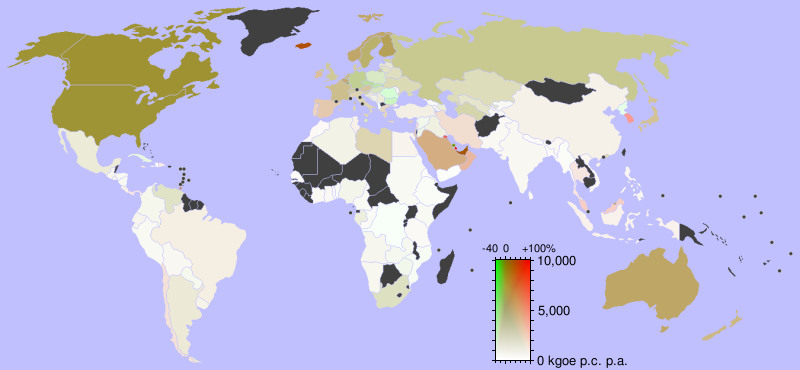
My Green Hedge on Inflation
Why a ‘green hedge’ on energy inflation works and makes practical sense.
No matter where you are in this discussion philosophically or politically, the economy is coming back. Already, the American consumer is getting more active. The fact that we’re coming out of a steep recession means that there is pent-up demand for things – like new cars, furniture, clothing. We’ll start taking more vacations. We’ll go out to eat more often.
In short, that means that Americans will be consuming more and more energy. And like any commodity, when there is more demand, prices go up. It doesn’t matter if you believe that global warming is happening or not, energy conservation is key to saving as much money as possible on the expected rise in energy cost. Thus is your “green hedge” on inflation.

Net energy consumption – increase, decrease.
The ‘green hedge’ works like any hedge on inflation: plan for the future and do everything that we can do to trim exposure to the rise in cost. The best savings are realized the sooner you cut consumption before prices go up. Every home and business can (and should) reduce energy consumption by 30%. That sound like a lot and it is a big goal, but even if your reduce energy consumption just a little, over time you make a huge difference in your bottom line. Collectively, we can actually push off hyperinflation in energy prices that have been predicted by world economists ever since the price of oil broke $100 per barrel back in 2007.
We can start by doing simple things like update our homes with Energy Star lighting and appliances.
We can unplug battery chargers for cell phones, computers, and cameras.
We can change habits like turn off lights, televisions and computers when we’re not using them.
We can adjust thermostats – warmer during summer, cooler during winter.
After you’ve done all of that, then you can advance to things like insulate your walls, ceilings and doors; update windows with double pane and roofs with reflective composites; add a pre-cool misting system to your central air conditioning system; ventilate your attic with solar powered fans; install tankless water heaters; and the ultimate – you can add solar panels to your home or business.
Not everybody wants to be a tree hugger, so I say “don’t.” Be smart instead. Plan for the future and put a Green Hedge Plan into motion before energy costs hit you where it won’t grow back.
UPDATE: When I wrote this in 2009, I had just started our house-wide energy conversion. Eight years later, I finished! I also replaced all our household lights with LEDs – way better energy savings than CFLs. My solar PV panels from SolarCity have produced about 40,000 kWh. We estimate that we have reduced our energy consumption by 40%, compared to where we were in 2009, and have saved about $2,500 (after purchase costs, including lease payments for the solar panels).
Bam.
About: Ray Wyman, Jr is a content creator, communications professional, and author with more than 30 years of experience. Visit LinkedIN or Raywyman.com for more information.


